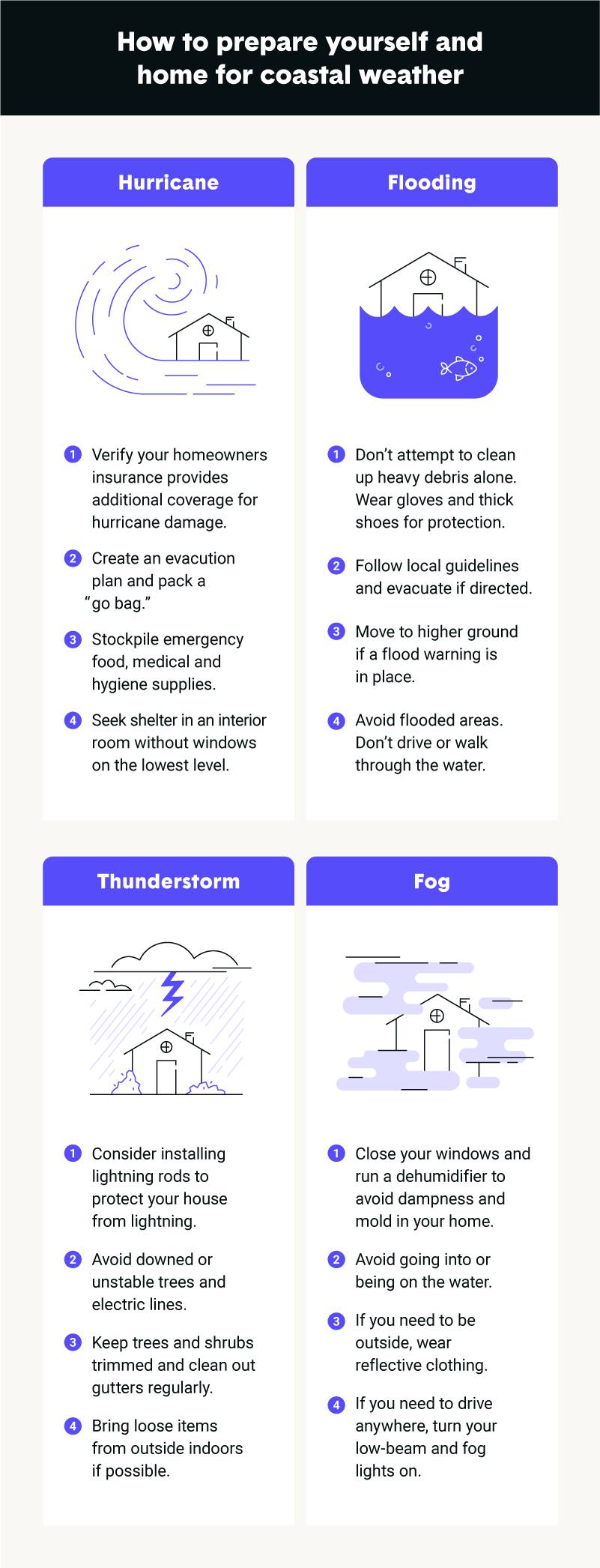Market value
Location is a major factor in a home’s market value. Where a house is located in the country and particular state and city is part of the equation, as is the home’s surrounding area, like whether it’s on a beach or even has surf break access.
Houses on the water on the West Coast are typically priced higher than those on the East Coast. The most affordable beach houses can be found on the northern East Coast, as the location is not ideal compared to houses on Florida’s southern beaches.
For example, you can find single-family homes in Atlantic City, New Jersey, for less than $200,000, whereas small condos on the beach in Miami, Florida, could cost around $1 million. However, all states have more affordable beaches in less populated areas.
Within California itself, the northern beaches are more affordable to live on than the southern ones. You’ll likely spend at least $1 million for a house on the water in California, but the most desirable views can reach $50 million to $100 million.
Beachfront property insurance
Homeowners insurance coverage for beachfront properties is much more expensive than policies for a house inland. This is because insurance providers consider beach houses risky due to extreme seaside weather and coastal erosion.
Beach houses often require additional or special coverage. For example, mandated flood insurance is common due to hurricane possibilities, especially on the East Coast. Your beachfront property might also qualify for high-value homeowners insurance, which in some cases includes higher liability limits.
Maintenance costs
For a primary house, it’s recommended to put aside 1% of the home’s value for annual maintenance costs[6]. However, for a beach house, which requires more regular maintenance, you might want to consider budgeting for a little more.
Being exposed to the ocean’s elements can take a toll on a house. The salty air and humidity can rust metal doors, windows, motor vehicles and outdoor equipment. Strong winds can damage the house and outdoor equipment over time, and the humid air and coastal rains can trap dampness, resulting in mold. The costs of preventing or fixing these issues vary. Every year, set a time to run through a home maintenance checklist to minimize worsening problems.
Additionally, living on the beach means you need to anticipate natural disasters and severe weather and the damage it can cause to your home. Tropical storms set records in 2020[7]. U.S. coastlines were hit with seven Category 3 or higher hurricanes, four Category 1 or higher landfalling hurricanes and 16 other tropical storms in the same year. Hurricanes bring strong wind damage and major flooding that you need to prepare for.
Extra costs
When buying a house, it may seem like costs just continue adding up. Thankfully, many of these costs are initial fees. However, you might face some recurring costs depending on the property you purchase.
- Homeowners association (HOA): An HOA is a self-governing group within a community that makes and enforces the rules in their neighborhood. An HOA’s goal is typically to maintain a particular image within the community. Homeowners in an HOA community are expected to pay monthly fees, which averaged $250 for a single-family home in 2021.
- Boat and dock fees: If you own a boat but don’t have a private dock at your property, you’ll need a slip for your boat at another dock or even a yacht club membership. Slip fees cost at least a few thousand dollars each year. If you have a private dock, your HOA might still charge a boat fee.
- Property management: If you plan to use your house as a vacation rental, you’ll need to pay someone else to maintain your property. Expect to pay property managers between 8% and 12% of the monthly rent.







